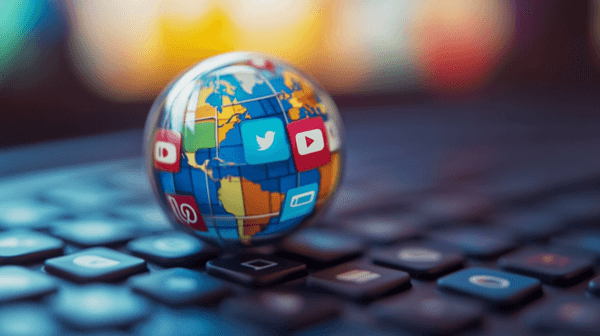
The world of brands:development and future in social media
The way brands present themselves and interact with their target audience has drastically changed over the past decades. In the past, traditional media such as print, television, and radio dominated marketing. Today, social media platforms like Instagram, TikTok, YouTube, and Facebook are the main stages for brands to spread their messages and reach their audience. But how has the world of brands evolved, and where is it headed in the future?
1. The Evolution of Brand Communication
In the past, brands communicated top-down: they controlled the messages sent to consumers, and there was little direct interaction. This one-sided communication was revolutionized by social media. Today, the dialogue between brands and consumers is more open and interactive. Users can directly comment on, share, and review brands, providing valuable feedback to companies while also presenting new challenges.
2. Influencer Marketing: A New Era of Advertising
One of the biggest trends in recent years is influencer marketing. Brands collaborate with social media stars who integrate their products and services authentically into their content. These influencers act as intermediaries between brands and consumers, bringing an authenticity that traditional advertising often lacks. An example of the success of this model is Nike’s collaboration with athlete and influencer Cristiano Ronaldo, who, with his massive reach on Instagram, connects millions of potential buyers.
3. User-Generated Content and Co-Creation
Another trend that has greatly impacted brands is user-generated content (UGC). Brands encourage their customers to create content in which they use or review products. This not only fosters a deeper connection to the brand but also generates free advertising through authentic voices. Successful examples include Coca-Cola’s “Share a Coke” campaign or Calvin Klein’s #MyCalvins campaign, where users worldwide shared photos in their Calvin Klein jeans and underwear.
4. The Power of Algorithms
Brands are increasingly dependent on the algorithms of major social media platforms. The algorithm determines which content is shown to users and which is not. This has led brands to design their content to generate as much engagement (likes, comments, shares) as possible, to appear higher in their followers’ feeds. The algorithm also influences advertising: Facebook and Instagram offer brands the ability to target ads based on user behavior and interests.
5. The Role of Brand Identity in Social Media
Today, having a good product is no longer enough. Brands must present a strong brand identity and values that resonate with their target audience. Consumers want to identify with the brands they support. This requires brands to act more transparently and authentically, especially on social issues like sustainability, equality, and ethical production. For example, Patagonia has built a loyal following through its focus on environmental consciousness.
6. Future Trends: From Augmented Reality to the Metaverse
The future of brands on social media is exciting and shaped by new technologies such as augmented reality (AR) and the metaverse. Brands like IKEA and Sephora already use AR tools that allow users to virtually test products in their homes or try on makeup. With the rise of the metaverse—a digital world where people can interact and shop—new opportunities arise for brands to present themselves and sell products.
Facebook, which has rebranded as Meta, sees the metaverse as the future of the internet. Brands will be able to create virtual stores, events, and interactive experiences that go far beyond what is possible today. Companies like Nike and Gucci have already started positioning themselves in this virtual world, offering digital products and experiences that allow consumers entirely new ways of interacting with brands.
7. The Role of Artificial Intelligence
Artificial intelligence (AI) will also play a central role in the future of brands. From chatbots that answer customer inquiries in real-time to complex algorithms that create tailored advertising content for individual users, AI will transform how brands reach their target audience. Amazon and Netflix already use personalized recommendations based on AI to target customers and enhance their user experience.
Conclusion: A Dynamic Future
The world of brands is more dynamic and diverse than ever before. Social media has not only changed how brands interact with their consumers but also how they present themselves. The future will continue to be shaped by new technologies, changing consumer needs, and innovative forms of brand communication. Companies that adapt flexibly and build authentic connections with their audiences will succeed in this rapidly changing digital landscape. Brands that emphasize social responsibility, transparency, and innovation will shape the coming years and continue to earn the trust and loyalty of their consumers.


